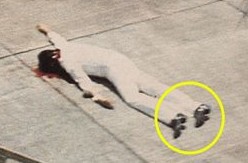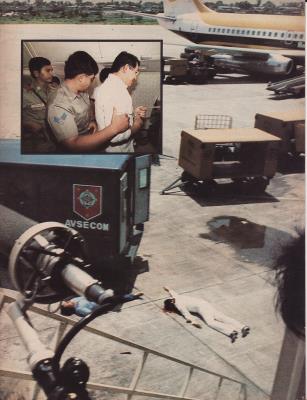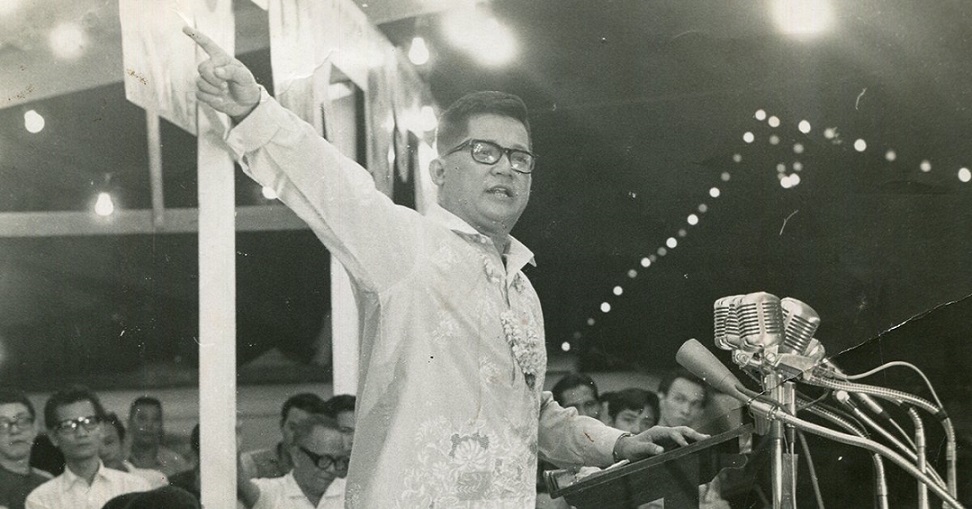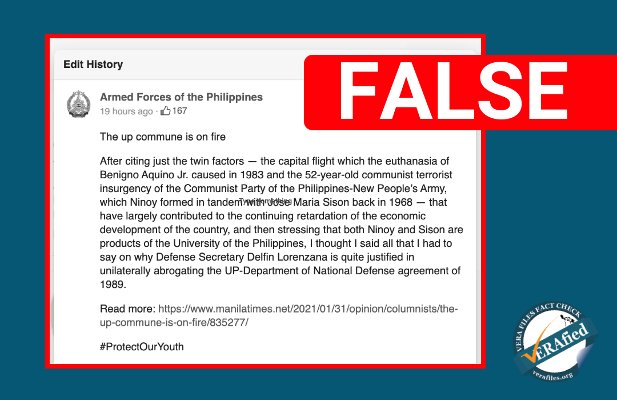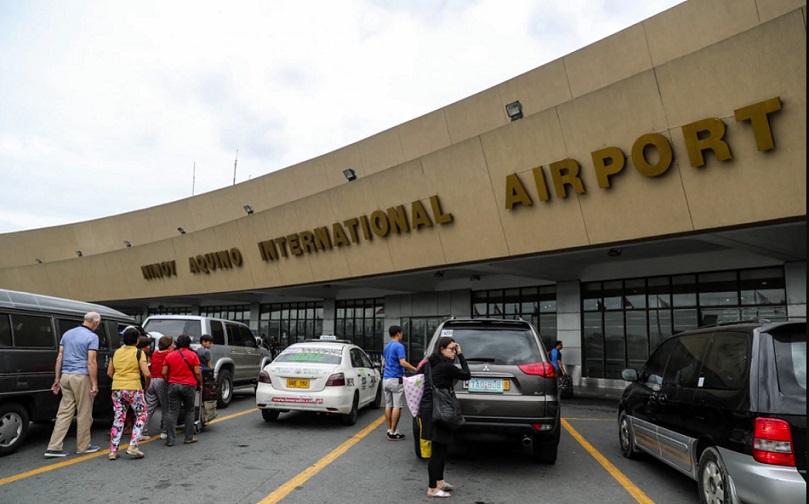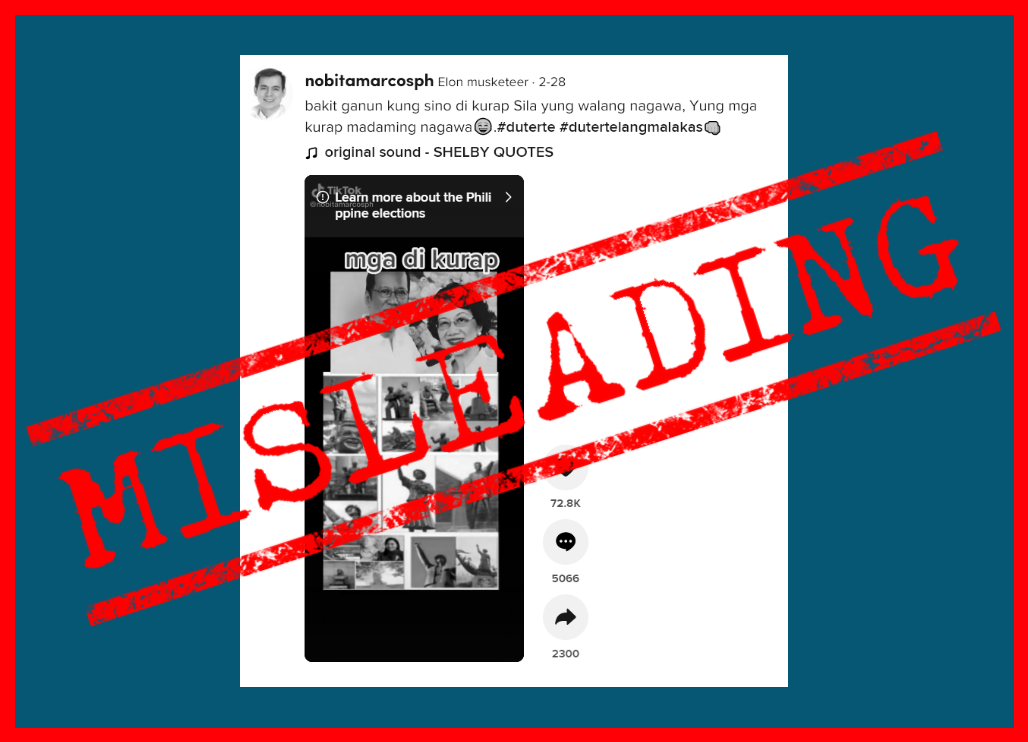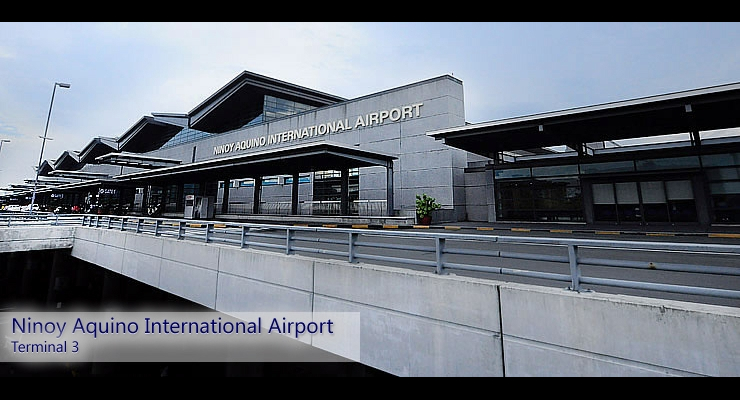By LUZ RIMBAN
THE photograph is 30 years old, but it provides startling details to an old, almost forgotten story.
Taken by a Japanese photographer, the picture came out in the Sept. 5, 1983 issue of Time Magazine. It showed the apparent lifeless body of former Sen. Benigno “Ninoy” Aquino Jr. whose murder on the tarmac in broad daylight on Aug. 21 shocked the world.
“I saw it when I first saw the photo in 1983, and no one has really taken notice of it,” said a VERA Files reader who sent the photograph, referring to a crucial detail the picture reveals.
“It shows that Ninoy raised both his feet by about two to three inches above the ground (see the shadow of the raised shoes) indicating he was still alive,” he added. “All other photos taken by other journalists later show both Ninoy’s feet flat on the tarmac.”
The photo can be considered another piece of journalistic evidence, one among many that helped piece together what really happened moments after Aquino stepped out of the China Airlines plane that early afternoon.
Aquino’s assassination signaled the impending fall of then President Marcos who in 1983 had been in power for 18 years. Elected president in 1965 and again in 1969, Marcos’ term was to have ended in 1973, his two terms making him ineligible for re-election. But he skirted what was then the constitutional term limit by declaring martial law on Sept. 21, 1972.
In 1983, Aquino had been exiled for three years in the United States after having spent eight years in a Marcos jail. Aquino decided to come home to challenge the Marcos dictatorship.
When the plane carrying Aquino landed at the Manila International Airport, soldiers escorted him out. Seconds later he was dead.
The Sandiganbayan later ruled that a military conspiracy was behind Aquino’s assassination. The public sentiment then was that Marcos tried to cover up the killing by blaming a communist hitman named Rolando Galman.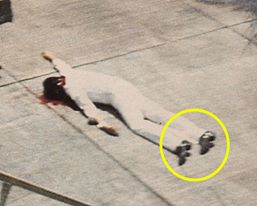
Thirty years and technological leaps and bounds later, the photo surfaced and was shared with VERA Files as proof that there are still many details about the assassination that have escaped public attention.
VERA Files earlier published excerpts from a tape recording made by Time Magazine correspondent Sandra Burton who was among the foreign correspondents who had accompanied Aquino on the final leg of his journey.
The recording captures the moments before Aquino disembarks from the plane and his fellow passengers’ reaction to the realization he had been killed.
Excerpts from the Burton tape were broadcast on the ABS-CBN documentary “Agosto Beinte-Uno: Ang Pagpatay kay Ninoy Aquino” which will be replayed on Sunday, Sept. 22, at 11 p.m.
If the photo shows Aquino still alive, where exactly and how much later did he expire? The answer to that question lies in the Sandiganbayan ruling that convicted 16 military men for the assassination.
One overlooked detail about Aquino’s death that the court ruling points out is the possibility that Aquino was hit on the head after he was shot on the tarmac.
The ruling quotes Dr. Juanito Billote, then chief resident of the Philippine General Hospital, who was present when the autopsy was conducted on Aquino at the Loyola Memorial Chapels in Makati where his body was brought hours after the killing. Billote was one of two doctors asked to represent the Aquino family at the autopsy.
“Significant in the testimony of Dr. Billote is the finding that there was a collection of blood or hemorrhage at the fronto-parietal area of the skull (top of the head, more on the left side) which indicated a depressed fracture. This, according to Dr. Billote, may have been caused by a severe blow from a blunt instrument,” the Sandibayan said.
“I don’t know kung siya ay napalo, or tumama yung ulo sa isang blunt object and that can be anything (I don’t know if he was hit or his head got hit by a blunt object and that can be anything),” said pathologist Raquel Fortun of the University of the Philippines College of Medicine who was interviewed for the documentary.
“What I do know from the footages, mukhang binagsak siya sa (he was dropped on the) tarmac. Dragged and then they let go of him. His head could have hit the tarmac. I know also that one observation is when they placed him in that van, they tossed him inside,” she said.
The VERA Files reader who pointed to the Time Magazine photo noted that it showed Aquino bleeding profusely from his gunshot wound. Galman, meanwhile, was also lifeless after having been shot by one of the soldiers, although he was supposedly to have been shot by soldiers who emerged from the van as shown in subsequent photos taken by other photo journalists that were presented in the Agrava Fact-Finding Commission.
“Where did Ninoy sustain the hematoma injury on his skull indicating that he still had blood pressure, meaning the heart was still pumping to have caused the condition?” the reader said.
He added, “This head injury was later described to be a depressed fracture which could only have been inflicted by striking the head with a blunt instrument. Where was it inflicted, in the van? Was Ninoy still alive while inside the van? This one photo taken by Matsuyama shows a picture that is worth a thousand words.”
(VERA Files trustee Luz Rimban based part of this article on the script she wrote for “Agosto Beinte Uno: Ang Pagpatay Kay Ninoy Aquino” which will be replayed on Sunday, Sept 22, 2013 over ABS-CBN Channel 2).
